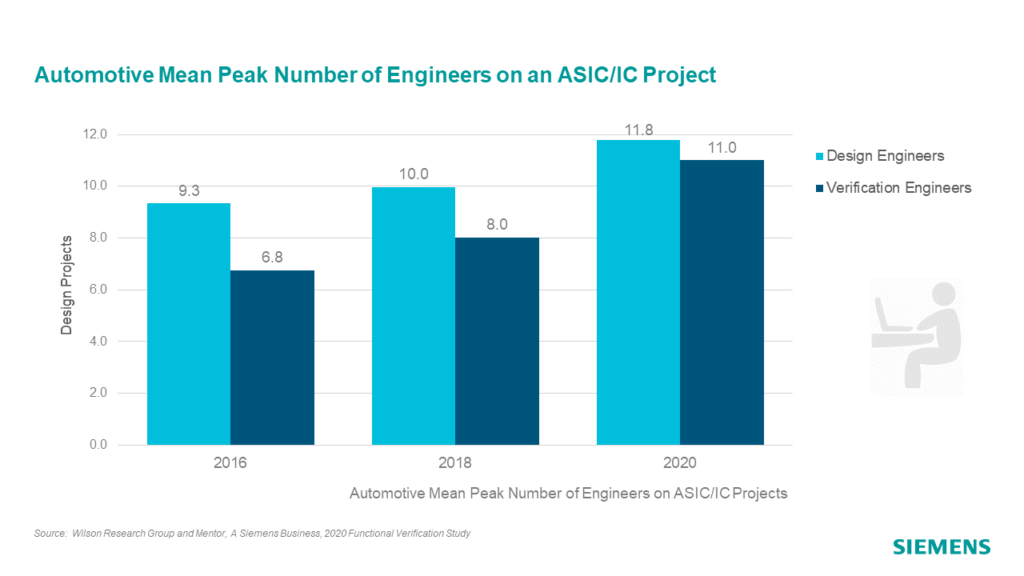Growing Complexity of Automotive ASICs

I was recently asked to compile some data from our 2020 Wilson Research Group Functional Verification Study focused specifically on the automotive space. And from this analysis I found one data point that really stood out. So I decided to do a quick blog and share this finding.
In the figure below, I am showing the mean peak number of design and verification engineers working on an automotive ASIC project. Keep in mind that this represents an average number of engineers across multiple projects. In other words, some projects will have more engineers, and some will have less depending on the complexity of the design. Yet, tracking the mean peak number engineers on automotive ASIC projects is still useful for identifying trends.

What stood out from this analysis are two things:
- The data suggest growing complexity of automotive ASICs, which can be observed by the overall increased number of engineers working on a project.
- The ratio of mean peak number of design engineers versus verification engineers is approaching 1:1, which is now in line with many other industries. In other words, automotive ASIC projects are maturing their verification processes to address growing complexity.
While the demand of design engineers has increased at a 6% CAGR from 2016 through 2020, the demand for verification engineers has increased at a 13% CAGR. In other words, verification complexity continues to grow at a faster rate than design complexity, which should not be a surprise to anyone.


